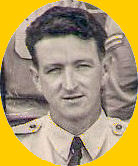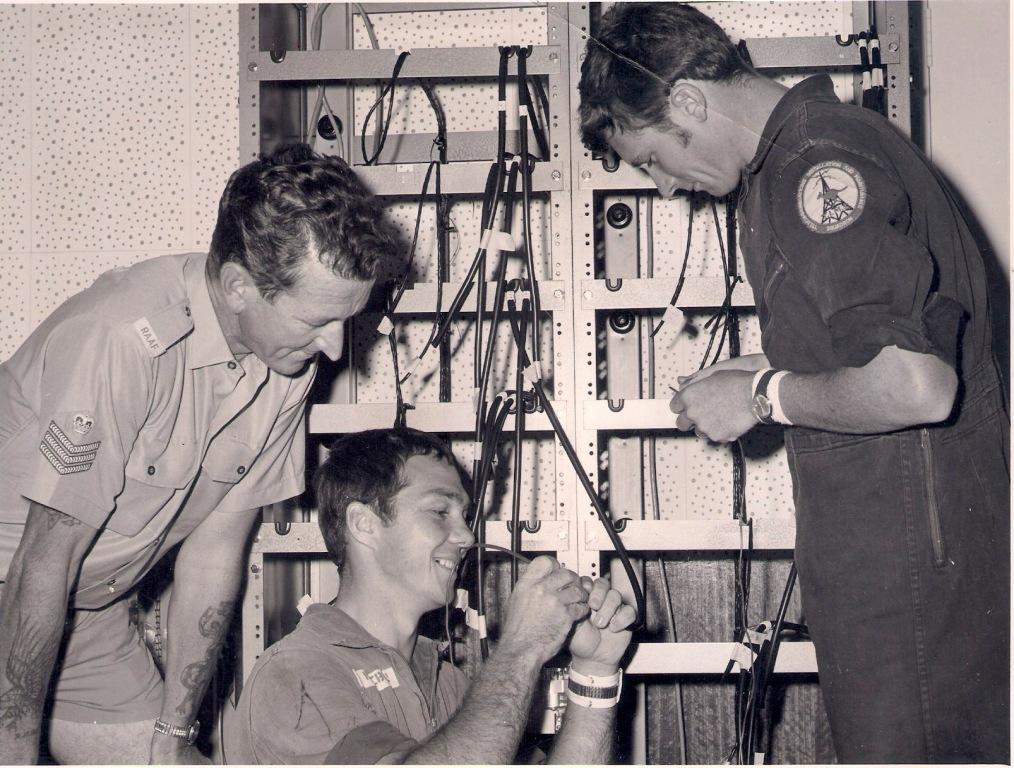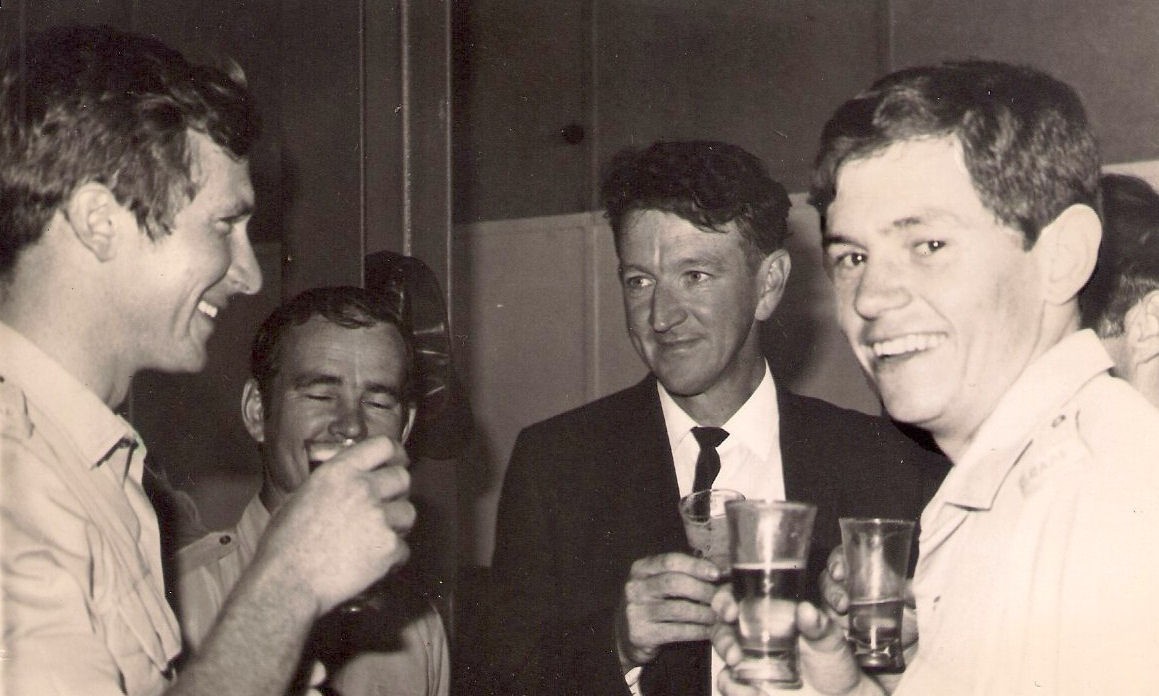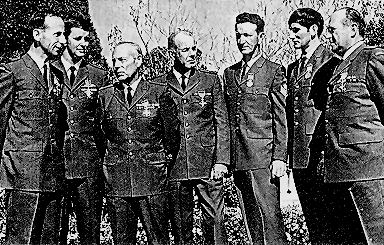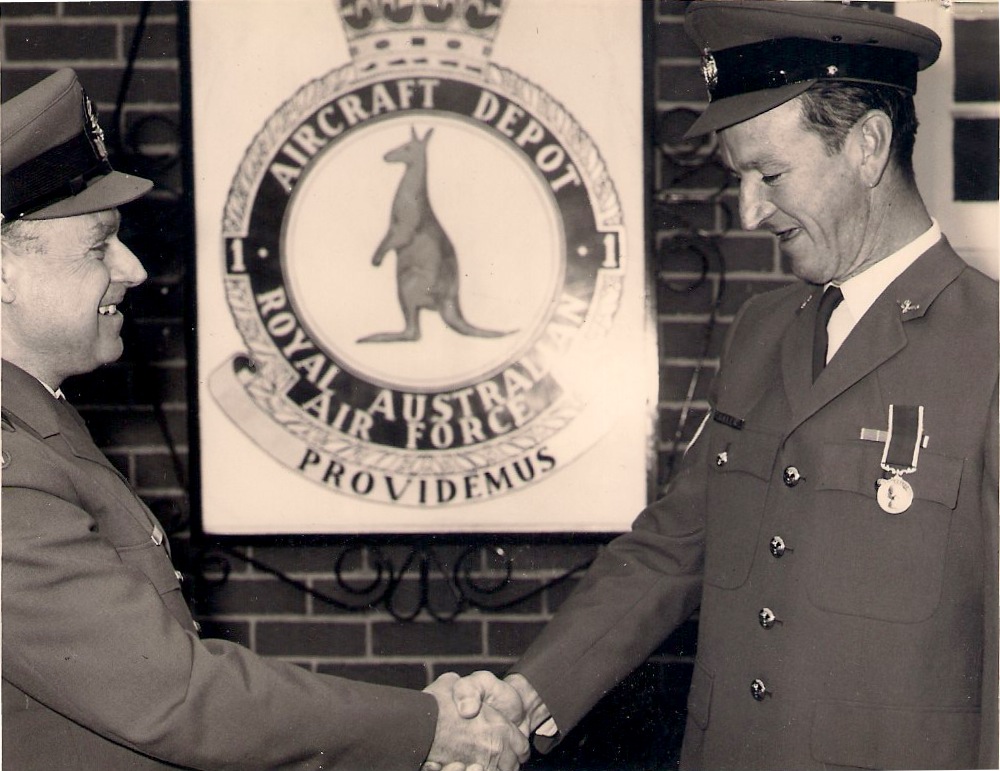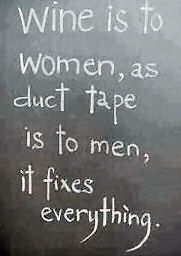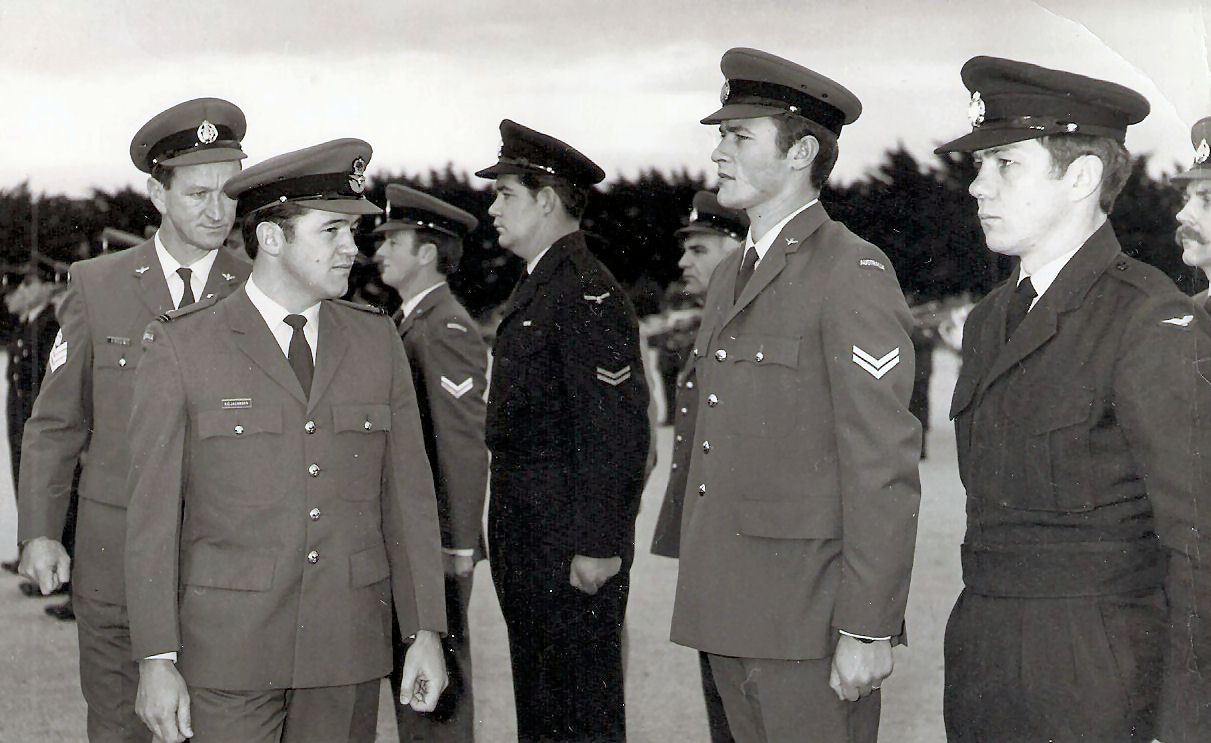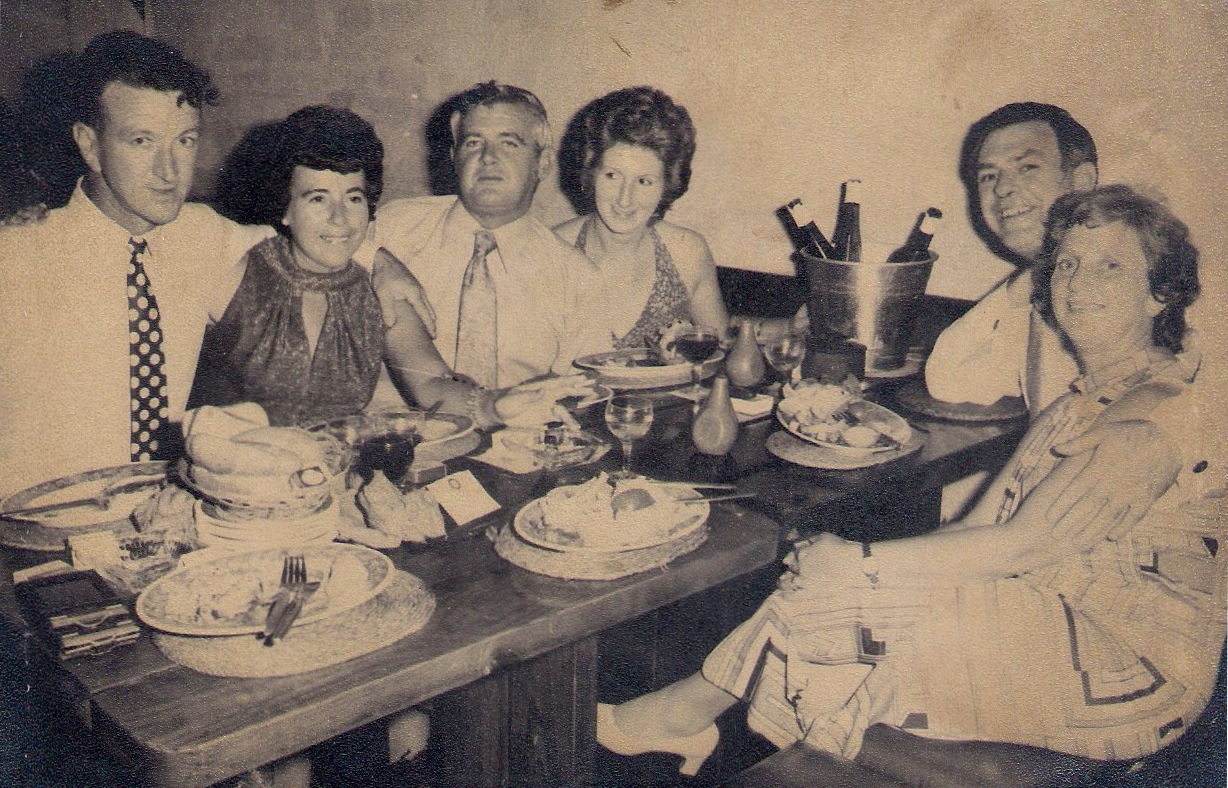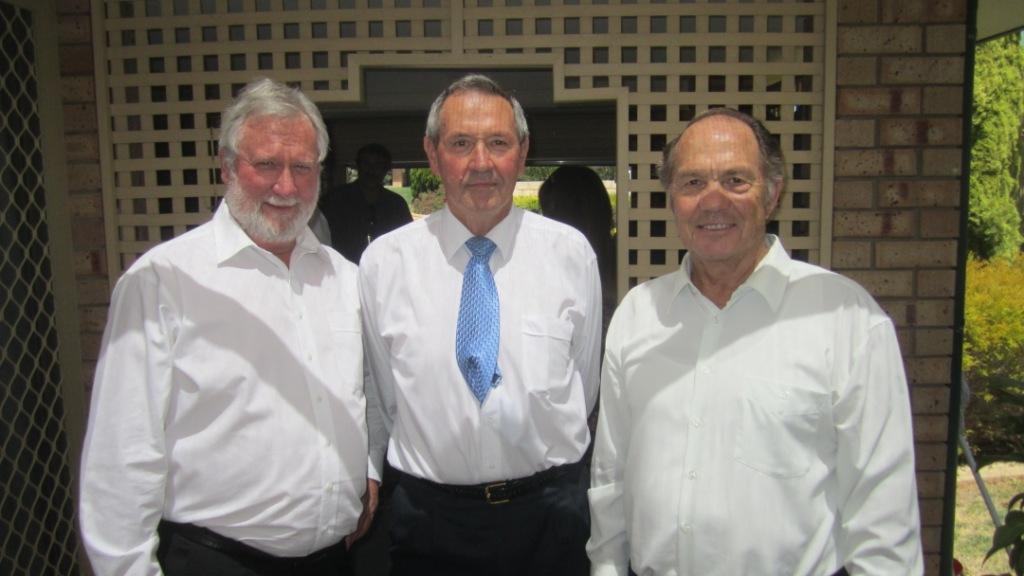|
|
|||
|
Privacy Policy | Editorial Policy | Profit Policy | Join the Association | List of Members | Contact us | Index | Links |
|||
|
Back Go to page: 1 2 3 4 5 6 7 8 9 10 11 12 13 14 15 16 17 18 19 20 Forward |
|||
|
My Story.
|
|||
|
|
|||
|
Lisa Williams.
My father was a RAAF man through and through. It was his only dream, first joining the CAF (Citizen’s Air Force) and then transferring across to the RAAF and so it became a way of life for mum, my younger brother and me. Our family enjoyed many postings including 3 years in Butterworth from March 1968 until February 1971 where I attended RAAF School Penang from Grade 3 through until Grade 5. We did the whole RAAF Brat thing every 2 or 3 years and accepted that way of life as the “norm” just as did many others.
I left Chandler High School (Noble Park, Vic) in April 1978 after becoming very disenchanted with putting in many hours of study towards my HSC but seemingly getting nowhere.
Not knowing exactly what I wanted to do with my life, I can still remember my dad’s insightful “You are not going to lie around here all day, I am taking you into RAAF Recruiting”!
I was first offered something known as “Category 2B Trainee” which I now think was a very political job for a female at the time – they were looking to push girls into that stream to show equal opportunity etc. It was, however, pointed out to me that it would be quite competitive against the guys and that they would not put me through without at least 1 more female as a “buddy”. Obviously, they could not sell it all that well to others and so I waited and waited and waited some more to be “called up”.
By this time, my best friend, Jenny, had also left the same High School
and had a change
And so, it began.
We went to see Recruiting again and at that time there was a push towards the Communications and Signals Operator Musterings. We were interviewed separately, me thinking she would take Commsop because of the better posting possibilities and her thinking that I would take Sigsop – I’m still not sure if it was the higher pay level or the thought of being some sort of spy that appealed to her. Once we discovered that we had chosen differently, we tried to have it changed but the guy in charge at the time wouldn’t have a bar of it. As her “trade” training was longer than mine and starting sooner, she was called up in January and I followed later on 19th February 1979.
At that point in time, female recruits were trained at the Women’s Training Unit (WTU) located at Laverton and it was 5 fun filled weeks of RAAF Law, PT, marching around on the tarmac amongst “dead” Hercules aircraft and much shoe shining and “panics”.
I can remember having to go back to Block 100 after lunchtime to pour methylated spirits over your feet to harden them up (God help you if you already had blisters) and to check to see if your bed had been “humped up” due to poor bed making skills. There were often lumpy bits as the mattress covers were made of thick vinyl and where your behind sank into the mattress would cause a sort of ripple effect which would leave your sheets and “counterpane” with lumpy bits showing through on the top. It would also follow to check the notice board to see if you had to “re-panic” your designated area for that week.
The smaller the girl, the harder it was for her to handle those big industrial floor polishers. A few good laughs were had when one of those things took off with someone too light to be in control of it!
The weeks passed quickly and before long it was the weekend before Graduation. Unfortunately for me and one other girl, there were no celebratory drinks that weekend as we had both been caught in the “boozer” at Point Cook at the “off pay night disco”. Jenny had convinced me to go and that it would be fine as it was away from Laverton and none of the Service Women’s NCOs or any of the 5 or 6 trainee ones assigned to Course 259, Repanic Reputation, would be there. Needless to say, Jenny was wrong and I received the tap on the shoulder suggesting that I should collect my things and leave – which I did, thinking that would be the end of it. I might add here that there were more than just 2 of us there, a couple more escaped by one of the windows, 2 of which were friendly with 2 of the trainee SWNCOs. So the old adage “it’s not what, but who you know” is very true!
The next day during class, the other girl and myself were both summoned to WOFF Joan Wootton’s office. After a severe dressing down by Maam Wootton, during which I tried my best to convince her that I thought it was only a disco and not the “boozer”. This story was at best rejected by her with a very loud “BULLS@#T” and the end result was CB (Confined to Barracks) for the weekend and having to report to the “Course Horse” every hour on the hour until bed time. Lesson learnt – don’t get caught next time!
My Commsop Course (17 Comms – 1 guy and 10 girls, I’m front row, second in from the right) finished in about October 1979 and we were sent to various locations as replacements for those that were proceeding on the Kangaroo Exercise and then proceeding to our various postings around Australia.
|
|||
|
|
|||
|
|
|||
|
I was posted to Townsville which was going to be quite close to my parents who had taken up residence in Mt Isa following dad’s discharge from the RAAF after 21 years, oddly enough the same year that I joined – not sure of any co-incidence there.
Townsville was considered to be a prime posting and a part of the “Northern Air Force”. The base was small and the people were friendly and the weather was warm, the pool cool and there was a Combat Survival School. After a few months, I met my future husband, Peter (better known as Parra and not because he had parachuted or followed the Parramatta eels). We were married 26th April 1981 at the Tropic Forest Garden Estate in Townsville. Life was good, I loved my job, the people that I worked with and the location.
In the latter half of 1983, Parra was posted from 35SQN Townsville to Base SQN Butterworth for 2 years with effect 05 January 1984 and so I approached my Orderly Room for a posting as well. I was practically laughed out of the place as it was unheard of unless you were a Nursing Sister as there was not the accommodation or toilet facilities in places of work for female members. I then asked for “Leave With-out Pay” and was subsequently told that I would only be entitled to 12 months but could not apply for that because my husband was posted overseas. I should’ve had the forethought to ask someone in authority for advice to help me gain a posting overseas and possibly set a precedent but time was fast running out as the cell in Canberra that governed that area wanted to know what I was doing. My choices at the time were:
· discharge or · stay in Townsville and let my husband go to Asia unaccompanied for 2 years.
Needless to say, I discharged and diligently followed my husband overseas for what I call a “working holiday”, that is, he worked and I had the holiday. The first females were in turn posted to Butterworth 6 months later.
There were not many jobs for spouses as the RAAF had an agreement in place to employ locally employed civilians. There was much sport to be played, shopping and eating to be done over the course of the next 2 years. I did do one round as a Bus Escort, as local buses were used, spouses were employed to supervise the children on the buses to and from school in the mornings.
After moving from Penang to Butterworth about 8 months after our arrival, I began volunteering at the Voice of the Royal Australian Air Force in Malaysia, RAAF Radio Butterworth (RRB). Becoming a Radio Announcer was in my sights, just as both my parents had been during our time there in the late 60’s/early 70’s.
Upon completion of my training, they let me loose on the air waves. The first shift that you were allowed to do was late from midnight to early morning so that if you did something wrong, the repercussions would be minimal. There was an extensive list of songs that were on the “banned” list and one had to be mindful of these songs. I think from memory I only ever breached this once following a quick trip to the ladies. The offending song was “Kiss The Bride” by Elton John and it followed an earlier track which was allowed, but I just didn’t quite make it back in time. You could play Madonna’s “Like a Virgin” but you could not say the title, you could only announce the song as “Here’s Madonna’s new single”.
RRB was a fun place to be with lots of social activities including a fundraising Lamington Drive where we made over 130 dozen lamingtons. The first ones we made resembled house bricks once coated in chocolate and coconut and so the size of the sponge to be dipped had to be rethought. If anyone remembers “Eimmy” the station’s secretary, she had been my family’s Amah during our stay there. Imagine working with a woman who had bathed you as a child and taken you to the Starlight Cinema on a Saturday afternoon to see whatever was showing.
As with all good things, our time in Butterworth came to an end and we were posted back to another part of the Northern Air Force, Darwin. During our 3.5 years in Darwin I worked as a shop assistant in a newsagency, as an express courier driver for Australia post and finally as a bank teller with Westpac. Finding work wasn’t all that easy contrary to my belief that having learnt to type at 35 words per minute would help gain me a job. Unfortunately not much else learnt or used during the course of being a Commsop could be utilised in civvy street. Not many places used encryption, voice radio skills or telex. A lot of businesses also did not like to employ spouses of military personnel as they knew that they would be posted in 2 to 3 years. Nowadays in high transient areas such as Darwin and Katherine (Tindal), businesses now readily take on spouses as they know that they will have those employees for at least 2 – 3 years, far beyond the 3 – 6 months of other travellers.
During my career with Westpac as a bank teller and after only being on the counter serving for a couple of months, I was robbed by a female at 2.40pm on a Tuesday afternoon. She said that she had a gun. The bank had taught us that you believe the offender and do not put yourself, other staff or customers at risk and so I complied and she made off with a little over $11,000. The gall of the woman! She was captured the following Saturday attempting to board a bus to leave Darwin.
I remained with the bank until the RAAF asked if we would be interested in having a second posting to Butterworth as at that time they were having trouble with a lot of people going over there and suffering “culture shock”, not enjoying their posting and asking to come back to Australia earlier than their scheduled posting return date. After about a 2 second consideration we were to return to Malaysia in July 1989.
The second time around was totally different as there were now only approximately 110 serving members plus their families as opposed to the 3,000 odd that were there during our first posting. 77SQN had returned to Australia taking the bulk of personnel with it. The RAAF Centre (Hostie) had moved to a much smaller one on Gurney Drive, Penang and we were now living on the 22nd floor of an apartment building as opposed to the Tan Sai Gin “squash courts” on the mainland of Butterworth.
Once again it was time for a “working holiday” although I did a small stint as the Commanding Officer’s Secretary (firstly under Graham O’Brien or more affectionately known as “Obie” and later on Jim Farquhar).
After much partying, shopping, eating, trips to Haatyai etc we decided that it was family time. Keely Rae Williams was born in the Penang Specialists Centre under Dr Kelvin Loh 26th August 1991. Having a baby in an Asian country is definitely an experience.
Our next posting was to 2SD, Villawood. I returned to part-time work with Westpac at Flemington Markets branch which was very busy. Almost every single customer (mostly fruiterers or fish mongers) banked $10,000.
Parra by now had been promoted to FSGT and mostly relegated to a desk, which he hated and so the opportunity arose to buy into a business in Katherine, NT. He was keen and so off we went in 1993. I did not want him to leave the RAAF and struggled with life in Katherine and being “permanent”, I transferred with the bank and worked with them for about a year before leaving to work within the businesses.
We had bought into 3 businesses, tree lopping (with DHA contracts), a motor vehicle service workshop and a panel beating shop. There were 2 other partners that wanted out eventually which left Parra and me to run the 2 remaining businesses (the panel beating shop was shut down). Anyone who has or is in business will understand how hard it is with staff and their belief that you take home every single cent made within that business.
Katherine was flooded on Australia Day in 1998 and was all but our demise. All of the tree lopping gear had been covered by 1.2 metres of water and insurance was not covering anything as most people did not have “flood cover”. This flood was a 1 in 100 event. Katherine had not flooded past knee height since 1957. The Katherine River peaks at 19 metres and the river broke its banks at 21.5 metres.
|
|||
|
|
|||
|
|
|||
|
We had gone to Darwin for the weekend to visit friends and now could not get home to Katherine. We lived in a high set house (16 steps front and back) and my parents had to go to our place by boat and pick up our 2 dogs from up the back stairs and take them back to their place in Katherine East, which had not flooded. I forgot to mention that dad had gained a job with the Defence Housing Authority and that they were now living in Katherine as well. Another reason for our move to Katherine.
I was about 3 months pregnant with our second daughter at this point in time. Leanna Rae Williams was born 3rd August 1998.
In April 2004, and after 11 years in Katherine, we sold just about everything, packed what was left into a sea container and moved west. Dad had transferred to Perth a couple of years earlier and so they were keen for us to move closer with their only grandchildren.
Dad had come over for work purposes and took the 2 girls back with him
by plane. I drove up to Darwin (310 kilometres) and put the 2 dogs and 2
cats on a flight west and then
Living firstly in Rockingham, Parra gained a job as a mechanic with the Mandurah Nissan/Mitsubishi dealership and me with a supermarket as their cashier – ordering all of the required change for the tills and counting the shop takings and preparing for banking. All of my years working for a bank finally paid off. We remained in that area until I was then offered a job in Mandurah as a training co-ordinator within the oil and gas industry and so we found a nice house to move to and packed up and moved yet again.
Several jobs late, I now work in a similar role for a great firm that is a contract company to Western Power - we lay underground power cable. It’s a bit further north from where I was. I am now receptionist, training co-ordinator (for about 40 employees), data entry operator, accounts clerk with some health and safety also thrown in – a far cry from my first love as a Communications Operator which will always be a very special time of my life with great memories.
If I had all my time over – I most definitely would join the RAAF again – I loved it!
|
|||
|
|
|||
|
|
|||
|
John "Jackson" Greer.
I’m writing this on behalf of my dear Dad, Jackson Greer, who passed away on the 9th of February 2014. This is just a part, of Jackson’s story…
Jackson was born in Brisbane on the 24th of March 1932, the youngest of 9 children. He lost his mother to pneumonia when he was only a baby of 17 months, leaving his father with a large family farm and 9 children to care for on his own. Jackson was sent to Brisbane to be raised by his grandmother, before returning to the family farm in Eumundi at the age of 5. When he was 10 years of age, he tragically lost his father in a fatal farming accident. With 4 of the older children involved in the war effort, there was no one available to manage the farm, so it had to be sold. Jackson was once again separated from his beloved siblings and sent to live with his aunt in Brisbane. During the time at his new school, he excelled in academia and developed a passion for rugby. He was selected to represent the Queensland schoolboy rugby team, but unfortunately his aunt wouldn’t allow him to travel down to Sydney with the team. The denial of this opportunity proved too much, so he left school and Brisbane as soon as he was old enough.
Jackson worked at a variety of jobs. He only managed one shift at an abattoir before realising he couldn’t stand the sight of blood. To satisfy his spirit of adventure, he followed the long family tradition and applied to enlist in the Navy. This was a far too protracted process for an eager young Jack, so in the meantime he enlisted in the RAAF. During his recruitment, he required a birth certificate, which he’d never seen before. It was then revealed to him for the first time in 19 years, that his name was actually John Greer.
In 1951, Jackson completed his rookie training at Base Squadron Amberley (BSAMB). He spoke of how he heard some of the recruits crying during their first night, feeling very homesick, Jackson however, felt like he was finally at home. He thrived in the RAAF, growing a whopping 10 inches in his first year of service. His passion for rugby continued and it was his defensive pressure on the field likened to a stonewall, that lead to the extension of his name from Jack to Jackson in reference to the famous civil war general, Stonewall Jackson. The nickname was to stick for life.
Early in 1952, he was posted with Roy Smeaton and Jim Hanratty, to the first and only Radio Servicemen (Ground) Serial 3 course at Air and Ground Radio School in Ballarat. This was a unique and demanding course, specialising in automatic telegraph and cryptographic equipment. Of the 27 students enrolled, only 9 graduated, and consequently the course was never repeated. At the time, the PMG had refused to Service RAAF equipment, since their technicians were not trained in servicing the tape relay system installed by the RAAF. As a result the 9 graduates were each posted to separate locations (having said this, the RAAF techs had no training on this equipment either and had to pick it up as they went along). Jackson was posted back to Amberley, Roy was posted to what was then, Eastern Area Headquarters at Glenbrook, whilst Jim remained in Ballarat to become an instructor.
All nine of the original group of graduates came back together again for a technician's course at the PMG College at Annandale, inner Sydney, in 1953. Living in Bankstown, they all spent a great few months renewing their comradeship.
In 1955 Jackson was posted to Melbourne Telecommunications Unit (MTU) RAAF Frognall in Mont Albert Road, Canterbury where he worked as a Circuit Control Technician and operated and maintained Auto Teleg equipment. Here he met his lifelong mates George Kleinig, Des Gilliland, Roy Barney and my Godfather, Harold ‘Snowy’ Winfield. So close was Snowy and Jackson’s bond, Snowy named his son ‘Jackson Greer Winfield.’
From May 1960 to August ‘63 he was posted to 3 Telecommunications Unit (3TU) or the ‘hush-hush’ unit as he referred to it, before being posted to Base Squadron Pearce (BSPEA). It was here in Perth in 1960 when he met Mary. Upon seeing Mary for the first time at a Perth nightclub, he told his friend and fellow airman John Woods, “I’m going to marry that girl one day” (the rest is history). The following year, Mary and Jackson were involved in a near fatal car accident. Mary suffered minor injuries, whereas Jackson had a broken neck. The doctor informed Mary that Jackson might not make it through the night, or possibly walk again should he survive. He spent several weeks in hospital, and nine months in a plaster cast that encased his body from head to hip. After extensive rehabilitation and numerous surgeries, he made a full recovery, although never to play rugby again (a small sacrifice in the scheme of things). He married Mary, the love of his life, and together they had four children - two boys and two girls.
No 1 Elmux course 1962.
Back L-R: Snow Pendelbury, Alex "Baldy" McLeod, Johnny Bowkett, Bill Greer, Col Collyer, Jerry Carlisle, Nev Petre, Bob Alum. Front L-R: Jock Brown, Neil Swanson, Jackson Greer, Rod Harris, Eddie Collas, Peter Denham, Roy Barney
In June of 1964, Jackson and family were posted to No.1 Aircraft Depot, Telecommunications Engineering Flight, Telecommunications Installation and Maintenance Squadron (1AD-TEF-TIMS) in Laverton. Mary surrendered her Dutch Nationality, becoming an Australian Citizen in order for Jackson to gain clearance for classified projects. As a senior NCO, part of Jackson’s job entailed mentoring the newly graduated technicians from Radio School.
“The posting to 1AD was by far the best posting I ever had with the RAAF. This was the result of a certain Flight Sergeant Jackson Greer. He made all of us new technicians welcome. He was down to earth and gained respect from us all. Day one, after clearances and finally finding the old roller door at 1AD (Tels Eng Flt) we were introduced to Jackson; no frills, just beret and overalls. G'day Jackson Greer.” - Ron Faulkner
“Jackson, your expectations were high, our looming had to be straight and tight, our wire loops uniform in size, and even the screw heads on the 7 foot racks had to be lined up, but you always made us feel good about the work we completed. The skullduggery that took place whilst we undertook work of a very high standard, was testament to the leadership skills that came naturally to you guys.” - Graeme Brownrigg (Brownie)
In 1969, Roy Smeaton was posted to 1AD, closely followed by Jim Hanratty. Three of the original old and bold (graduates from Ballarat, 1952) were now reunited, in one place, and in charge.
“Our paths didn't cross again until I was posted into 1AD at the beginning of 1969 as a brand new flight sergeant, and I was very pleased to find Jackson there ahead of me and pretty au fait with the shocking conditions there. No names, no packdrill, but the Warrant Officer in charge attempted to stir up trouble between his senior NCOs’ and in particular between Jackson and I (he picked the wrong pair there, because we were as thick as thieves and kept one another abreast of what was going on). Luckily, the ‘gentleman’ reached retiring age and was replaced by a new Warrant Officer, Jim Hanratty, so the three senior NCOs’ were all from that original nine.” - Roy Smeaton
There was a time when Squadron Leader Jim Beer paid a visit to see the CO of School of Radio. He wanted to know how the School selected techs to become Telstechs, rather than Radtechs. The CO of RADS answer was along the lines of “Those who seem to be struggling, a nuisance, or a troublemaker etc get to be Telstechs, while the better class of successful trainees become Radtechs. Why do you ask?” “Well,” said Jim Beer, “explain to me why I get twice as much work done, that is twice as good, from half the number of workers, in half the time.” This success was attributed to the leadership skills displayed by Jackson, Jim and Roy. – Val Robinson
In 1971, the 1AD Telstechs were tasked with installing the new Communications Centre in Butterworth, Malaysia. Due to the size of the project, a large number of techs were required. A Telstechs course was just being completed at Radio School, so a large number of techs were posted in from that course.
“The techs were all raw with no field experience at all and no knowledge of a working Communications Centre. Jackson took them all under his wing and moulded them into a great team of techs. Advising them all as they refurbished into as-new condition all forms of consoles and Teletype machines. I am sure all of them would say that they turned into competent techs, solely as the result of Jackson’s mentoring and advice.” - Mick Lawson.
Butterworth Comm Centre, 1971.
L-R: Jackson Greer, Newton Klaebe, Ron Faulkner. (Newton & Ron were pallbearers at Jackson’s farewell service)
Eventually all the equipment was crated up and loaded into two Hercules aircraft for the long haul to Butterworth. The techs travelled with the load, seated along the outer hull of the Hercules.
“Jackson found a comfortable seat inside a new Land Cruiser that was thrown into our Herc, to complete the full load.” - Mick Lawson
Arriving in Butterworth, they set about the huge job of cabling. Jackson and Roy taught the crew the correct cabling methods, how to lace in cable looms and terminate correctly. The group remained in Butterworth for over three months, working long hours and playing hard in their leisure time.
1AD Christmas 1971.
L-R: Ron Faulkner, Norm Ellis, Jackson Greer, Kev Ambrust.
“If Jackson wasn’t satisfied with the work being done by the appropriate trade, he’d go and learn how to do it himself. He worked out how to make the noisy six gang tape transmitters about 60% quieter. The refurbished equipment Jackson had prepared for the new communications centre in Butterworth was far better than the equipment when it was brand new.” - Roy Smeaton
In 1972, Jackson was awarded the British Empire Medal in recognition of his outstanding achievements in the telecommunications field, particularly in respect to the Butterworth installation, and for his selfless and devoted service during his long tour of duty at No 1 Aircraft Depot.
BEM Award 1972.
Seven members of the RAAF from Victorian units received awards from the Governor of Victoria, Sir Rohan Delacomnbe, at Government House, Melbourne, on the20th April, 1972.
Pictured in the grounds of Government House after the investiture are L-R: Sqn Ldr DC White, 1FTS Pt Cook (DFC), Flt Lt JA Landale, 1FTS Pt Cook (AFC), WOff G Dennis, East Sale (MBE), Wg Cdr AR Jans, Pt Cook, (OBE), FSgt J Greer, 1AD (BEM), Sgt AA McLeod, BSqn Laverton (BEM), and WOff WR Walters, HQSC (MBE)
L-R: 1AD CO John Swales and FSGT J Greer, 1972.
The consummate professional also had a mischievous streak with his energy, charisma and larrikinism sometimes causing strife.
“There was a time at Sutton’s hotel in Footscray when Jim (Hanratty) and Jackson set me up as the middle-weight champion of Australia. That was ‘interesting’ for a while.” - Val Robinson
“I recall when Jackson took the whole crew into the Sergeant’s mess. We all had plenty, but Jackson told the mess staff that we’d all just been made up to Sergeants, and he was buying us a congratulatory drink.” - Mick Lawson
Occasionally, even a run-in with authority. “A certain Wing Co in Butterworth would certainly remember him, as would a certain young Flying Officer.” - Mick Lawson.
1AD’s 51st Anniversary.
L-R: FSGT Greer, F/O Jacobsen, SGT Morley, LAC Klaebe.
In November 1973 after a nine and a half year tour of duty with 1AD, Jackson was promoted to Warrant Officer and posted to Staff Officer Telecommunications Engineering (SOTELENG) in the then Headquarters Support Command at Victoria Barracks, Melbourne. He was employed as a technical specialist, advising project officers across Australia on how best to address the myriad of problems that arose with the RAAF ground based telecommunications equipment. He also worked on project tasks such as the Secure Telex design and other major computer installation tasks. Before the Secure Telex project, the RAAF had telex machines in all communications centres, but could only handle unclassified traffic. A special system was developed by Defence in conjunction with Telecom to make this system operate using encryption devices, so that no third party could read the messages sent from one telex machine to another. This allowed classified messages to be sent across a commercial network.
“Jackson worked with me on the development of the Secure Telex project and his was a major contribution to the practical design of the equipment console. He had such a flair for the practical aspects of telecommunications engineering projects. Some aspects of his design work bordered on art, they were so elegant.” - Russ Walker
Jackson (Dad) and family lived in Laverton for 11 years. During this time we saw many RAAF families move in and out of Studley Court. Dad requested a posting with the hope of moving to Perth so Mum could be closer to her extended family. A posting wasn’t available so in 1975 after 25 years of service, Dad retired as a Warrant Officer. Soon after, we moved Perth where we still reside to this day. Dad worked as a Telecom Technician from 1975 to ‘89 and later worked at the West Australian Newspaper for 7 years, before retiring in 1996 at the age of 64. He was highly regarded by his colleagues, enjoying many good times and friendships in these roles, however it was no substitute for the camaraderie of the RAAF.
L-R: Jackson and Mary Greer, Jim and Barbara Hanratty, Roy and Fay Smeaton.
In his retirement, Dad spent many hours in the garden tending to his ferns and prized elkhorns, “my little piece of Queensland,” he used to say. He also loved reading, researching history and completing cryptic crosswords. His role as patriarch of the family meant he spent a lot of his time renovating houses. When not lending a helping hand to family or friends, he would always have a project of his own on the go. His greatest source of joy was spending time with family and friends who adored him. Mum and Dad enjoyed a modest lifestyle, yet Dad always claimed he was ‘rich’ having been blessed with four healthy children (and seven beloved grandchildren).
Jackson’s farewell service.
L-R: Ron Faulkner, Val Robinson, and Newton Klaebe
The RAAF played a significant role in Dad’s life. He would often reminisce about his escapades and the wonderful friendships he formed. We received many emails and phone calls from his RAAF mates upon them learning the news of his illness and subsequent passing. Wherever he went, he made friends. His strength, humour and humility endeared him to all he met.
As Dad maintained throughout, he “lived a blessed and fortunate life.”
Yvonne Greer – Cain
Coffee. A warm delicious alternative to hating everybody and everything, every morning, forever.
|
|||
|
|
|||
|
|
|||
|
|
|||
|
Back Go to page: 1 2 3 4 5 6 7 8 9 10 11 12 13 14 15 16 17 18 19 20 Forward |
|||
|
|

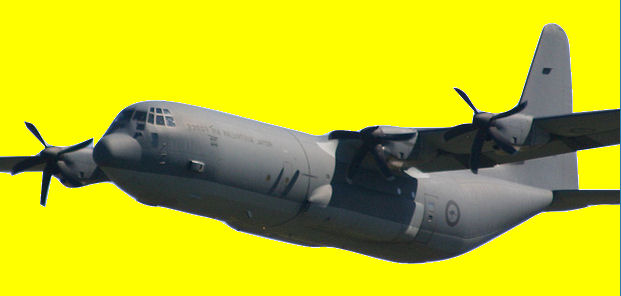

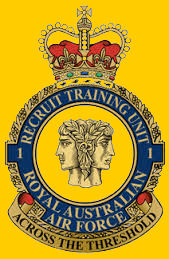 of heart from being a teacher to coming around to my way of thinking
that joining the RAAF together would be a good plan and would help us to
escape the clutches of our domineering mothers! She still calls it
“running away from home with permission”.
of heart from being a teacher to coming around to my way of thinking
that joining the RAAF together would be a good plan and would help us to
escape the clutches of our domineering mothers! She still calls it
“running away from home with permission”.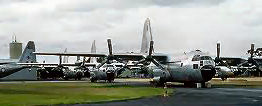
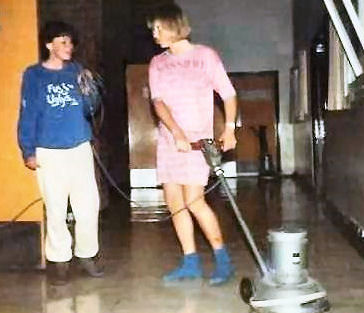
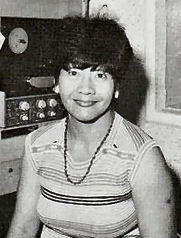
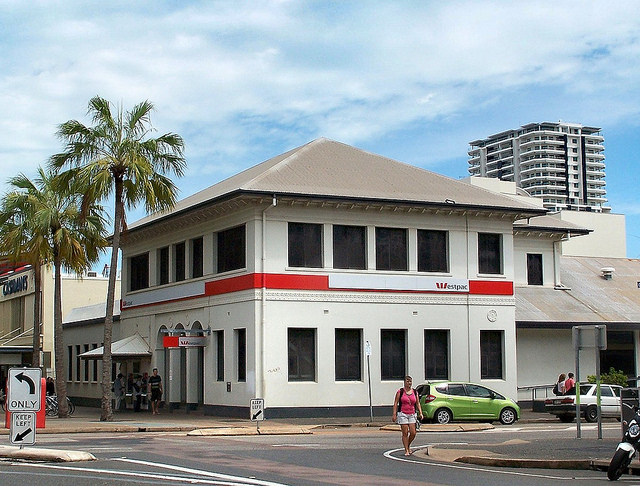
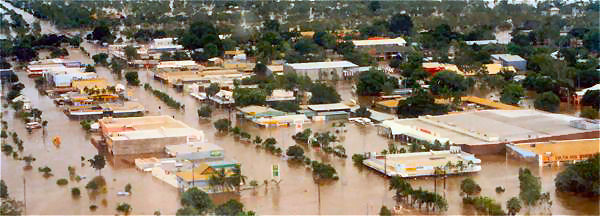
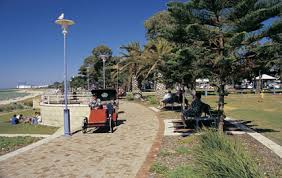 drove back again. The poor car was packed to the hilt. We left just
after my 44th birthday and have never been back.
drove back again. The poor car was packed to the hilt. We left just
after my 44th birthday and have never been back.
